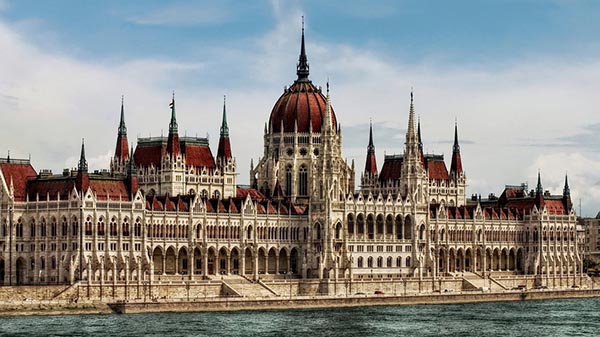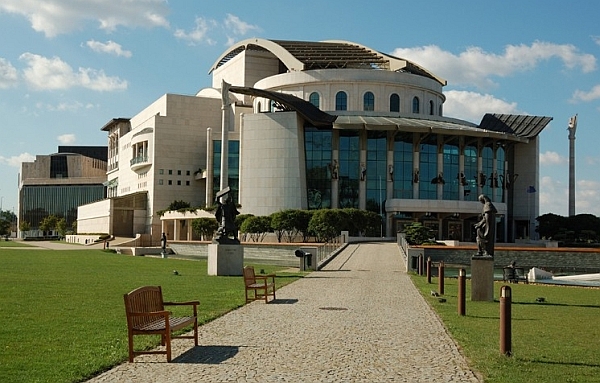If, like many, you are looking for the old Communist statues that decorated the city, you will be disappointed to find that shortly after the fall of Communism they were moved to Memento Park in the XXII district where they are on display. The statues you find around the city celebrate those who have contributed to the historical, political, cultural, and scientific achievements of the country.
Architectural variety
Statues aside, the city is abundantly rich in architectural treasures. Dating back to Roman times when they occupied the area in the 2nd and 3rd centuries, you can visit the Aquincum Museum to see what remains have been preserved.
Gothic-style architecture was a significant style used in the 14th and 15 th centuries, but most of the buildings have since been destroyed through wars. Gothic revival was partially used for the Parliament building.

The invasion of the Turks brought this part of the world into the Ottoman empire, and they left their mark with their architectural designs. Two places to experience this firsthand are a couple of the thermal baths: the Király was begun in 1565 and the Rudas around 1580. See “Budapest’s Most Popular Thermal Baths”.
By the 19th century, architecture adopted the classical style following the precepts of ancient Greek and Roman artistic rules. The most outstanding example of this fashion is the National Museum. Adaptation of this can be seen at the Museum of Fine Arts, which was created in the neoclassical style, as was St. Stephen’s Basilica with its Greek cross ground plan.
Breaking the mold
Art Nouveau, the international art and architectural form, infiltrated the building designs of Budapest during the late 19th and early 20th centuries. Due to its breaking away from more traditional styles, it is also referred to as secessionist; they incorporate the folk items of each culture, therefore, distinguishing them from country to country. Often, you will hear buildings referred to as Hungarian secessionist. The famous Hungarian architect, Ödön Lechner, has made this form popular. One fine example of his work is the Museum of Applied Arts where his use of Zsolnay ceramics became one of his trademarks.
Another delicious example of his originality is the oft-overlooked Postal Savings Bank or Postatakarékpénztár at Budapest, V. Hold u. 4. Much of the detail is lost from the street view, but if you don’t let the trees obscure your line of sight from across the street, you can see the folk symbols of beehives, bees, and birds adorning the side of the building. When Lechner was asked why he would place ornamentation out of people’s view, he is said to have replied, “The birds will see it.”
At first glance, the Great Market Hall may look like another Lechner design due to the colorful tiles on the roof, however, this building was designed by Samu Petz and built in 1895-97.

Another prime example of Art Nouveau is the well-marketed Gellért Hotel. Much of the interior has still not been revamped since it was originally built. The Gellért thermals are also of the Art Nouveau fashion. Owned by the city and not the hotel, they have been completely restored; however, the men’s sauna is authentic Zsolnay porcelain, while the women’s is imitation.
One building that should not be missed is the Nyugati Train Station, also referred to as the Western Railway Station. It is distinguished as it was designed by Gustave Eiffel studio, of Eiffel Tower fame, in the 1890s. The glass-and-iron construction has a pleasing esthetic appeal. The cafe is now a somewhat tasteful, if not overly lavender, Art Nouveau McDonald s.
In the 1930s and ’40s, Hungarian architects embraced the Bauhaus mode of design, incorporating modern style with functionality. A group of architects proposed creating a full street in Bauhaus fashion as had been done in Stuttgart, Germany. Much of this is still intact at Budapest, II. Napraforgó u. 1-22. Twenty-two homes were built surrounding a small square where a commemorative stone lists all the architects involved. Some of the houses needed rebuilding, but the overall character has been kept intact. To explore this area, take bus No. 5 to the end of the line at Budapest, Pasaréti tér.
Other isolated examples can be viewed in the XIII district at Szent István Park (St. Stephen’s Park) and Margit körút where houses are six stories tall. In the same district at Budapest, Pozsonyi út 53-55. is a Bauhaus building with tiny stores on a triangular area at the corner of Wahrmann Mór köz. Szent Istvánváros Protestant Church complete with belfry is located at Budapest, Pozsonyi út 58. It was finished in a modern fashion with traditionalist streaks and opened in 1940.
Two luxury homes are at Pozsonyi út 38-42. A residential building with a unique entryway with an arched wall at a 45-degree angle was built at Pozsonyi út 33/a.
Asymmetric shops combined with a residential building with oversized balconies that cover the facade are located at Budapest, Tátra utca 5/c. Yet another residential building is on a corner with interesting arched balconies and a capricious facade at Budapest, Pozsonyi út 19.
The modern age
For a sample of “What in the world is that exactly?” you should head on down to gawk at the Lehel tér market (Lehel Csarnok) at the Blue metro (line No. 3) stop by the same name. It opened in 2002, but it was some time before people could adjust to the fact that it was indeed a market, because it looks like a ship that has badly miscalculated. The architect to credit or hold responsible, depending on your point of view, is László Rajk. Other contemporary buildings are being raised by foreign investors.
The Kempinski Hotel is an example of a large building standing out like an orphan at a family reunion. Another example of modernism, built at the foot of the Rákóczi bridge (former: Lágymányosi Bridge), is the National Theatre with its minimalist exterior, using lighting effects to give it additional visual appeal.

Alternatively on the same campus is the Palace of Arts, which incorporates different styles. Both were based on the designs of Mária Siklós.